Steam and the inexpensive electricity it could produce brought about dramatic technical growth in the United States. Developed during the last century, reliable and efficient steam engines were the forerunners of today's massive generating facilities. A rare survivor of the period, the Pratt facility is the oldest generating plant of its kind in the Northeast and embodies the typical features of engines in a row, open-front marble switchboard, and an observation balcony at street level.
USA
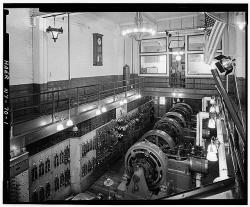
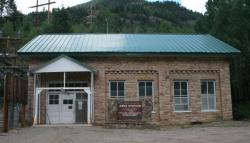
"Electricity produced here in the spring of 1891 was transmitted 2.6 miles over rugged and at times inaccessible terrain to provide power for operating the motor-driven mill at the Gold King Mine. This pioneering demonstration of the practical value of transmitting electrical power was a significant precedent in the United States for much larger plants at Niagara Falls (in 1895) and elsewhere. Electricity at Ames was generated at 3000 volts, 133 Hertz, single-phase AC, by a 100-hp Westinghouse alternator."
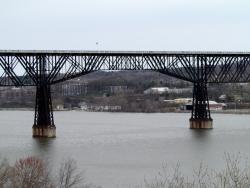
A bridge across the Hudson at or near Poughkeepsie was planned starting in the early 1870s to primarily carry coal from the coalfields of northeastern Pennsylvania to New England. At the time there were no bridges between Albany and New York Harbor. Horatio Allen, soon to be President of the ASCE, was its first Chief Engineer. He designed a multiple span suspension bridge. Later the American Bridge Company started construction on a five span bridge but went bankrupt before it completed the first pier foundations.
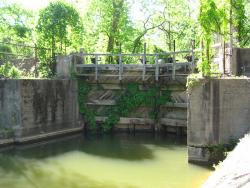
These canals and locks are a part of the first extensive system of canal and river navigation works undertaken in the United States. The idea for the canal was proposed by George Washington, when, as an engineer, surveyor and military emissary for Virginia, he saw the need for a trade route west beyond the Allegheny Mountains. In order to do create this route, it was necessary to try to tame the Potomac River which was a wild, unruly stream which only the hardiest of rivermen ever attempted.
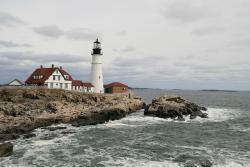
The Portland Head Light was the first lighthouse to be constructed in Maine and the first one completed and put into service by the Federal government under the Lighthouse Act of 1789, which moved to place all lighthouses under federal control. While work had begun on the lighthouse in 1787 by the State of Massachusetts which, at that time, had jurisdiction over Maine, it was completed by the Federal government. When this lighthouse was being built, Portland was the sixth largest port in the country, the closest port to Europe and had significant trade with the Caribbean.
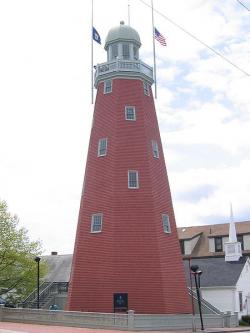
The Portland Observatory was built in 1807 by Captain Lemuel Moody to serve as a communication station for Portland Harbor. Portland Observatory was one of the earliest marine signal stations in the United States, and it is the last known to survive. The Observatory's location on Munjoy Hill gave it a clear view of vessels approaching Portland Harbor. The Observatory contributed to the prosperity of Portland Harbor as a vital center of maritime commerce during the "Golden Age of Sail."
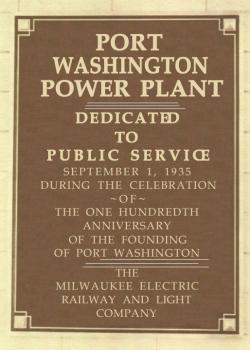
The Port Washington Power Plant of the Wisconsin Electric Company was the most thermally efficient steam power plant in the world for many years following its opening in 1935. Its design reflected the cumulative experience of the utility's engineers in burning pulverized coal at the Oneida Street Plant and the Lakeside Station in Milwaukee.
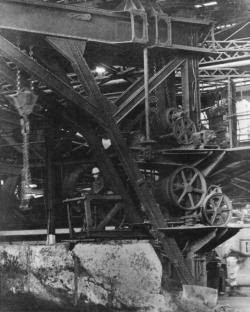
Used to lift molten iron to molds where it was cast into pipe, jib cranes were the sole means of conveyance in the pit-casting process. When pit casting was replaced by centrifugal casting in the 1920s, many pits were filled and the cranes were used to produce cast iron fittings or general maintenance work. Only one jib crane remained at the American Cast Iron Pipe Company in recent years, and it was probably the last pit-cast jib crane to operate, which it did until it was given to the Sloss Furnace Museum in early 1986.
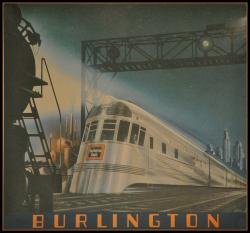
In the late 1920s, the automobile cut railroad passenger service by more than half. The debut of the Pioneer Zephyr heralded a comeback in 1934, touring the country and being seen by some two million people in 222 cities.
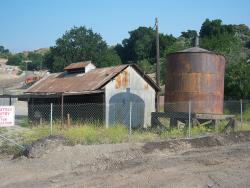
The economic situation in the whale oil business (for lighting), coupled with the increased demand for lubricants, stimulated growth in the U.S. petroleum industry. The drilling of the heavy, sulfurous, and asphaltic California crude began in the 1870s at the Pico Canyon area, using the apparatus and techniques from Titusville, Pennsylvania, developments.
Innovations
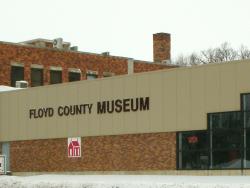
In 1892, John H. Froehlich, Froehlich, IA, Mounted A Gasoline Fueled Internal Combustion Engine On A Traction Geared Frame And Used It To Power A Threshing Machine. A Change In Power Source Had Begun On North American Farms. In 1892, The Case Co., Racine, Wi, Built An Experimental Gas…
Read MoreIn 1926, Ives Hall, the original Agricultural Engineering Building at The Ohio State University, Columbus, was designated as ASAE's first engineering landmark in honor of department founder and 18th president of ASAE Fredrick Walter Ives. Frederick W. Ives 1884 - 1924.
Ives Hall was on…
Read More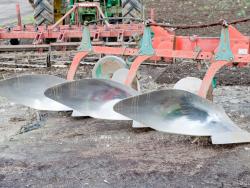
On this site in 1837 John Deere built the first successful self-scouring steel plow, thereby making a significant contribution to the development of American agriculture. Dedicated by American Society of Agricultural Engineers 1976
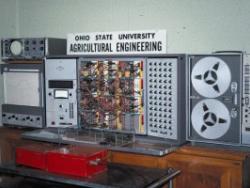
The first laser grade control was developed by agricultural engineers James Fouss and Norman Fausey of USDA's Agricultural Research Service at The Ohio State University in the mid-1960's. That system controlled the precise depth and grade of subsurface drains by regulating trenching and…
Read More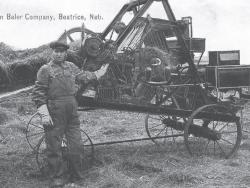
Luebben Hay Baler - Historic Landmark of Agricultural Engineering. In 1892, Hugh Luebben from Sutton, Nebraska, with sons Melchior and Ummo built a mobile machine to produce round hay bales between two sets of rotating flat belts. They began manufacturing the baler in 1909 in Beatrice…
Read More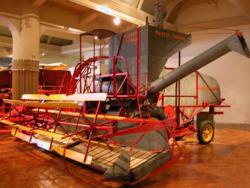
Designated A Historic Landmark Of Agricultural Engineering The Massey-Harris No. 20 was the First Commercially- Successful Self-Propelled Combine Used to Harvest Small Grains Under a Wide Variety of Conditions, World-Wide. Engineered By Thomas Carroll, Chief Engineer, Aided by Robert…
Read More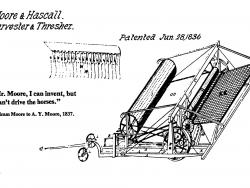
A Historic Landmark of Agricultural Engineering in 1834 Near the Village of Climax, Michigan, Hiram Moore and John Hascall Built and Put Into Practical Use the First Successful Grain Combined Harvester - Thresher Which was Patented June 28, 1836. This Achievement was a Significant…
Read More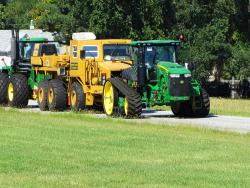
The First Official Nebraska Tractor Test was Started in this Building March 31, 1920. These Pioneer Tests Became Worldwide Standards and are Recognized by The American Society of Agricultural Engineers as an Historic Landmark of Agricultural Engineering. 1980
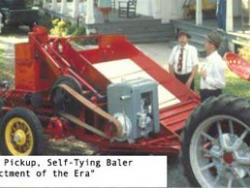
This machine is the world's first successful automatic pickup, self-tying hay baler. Its invention was a significant contribution to the development of American Agriculture. The baler was invented and hand-built in 1937 at Farmersville, Pa., a few miles from here. After testing and…
Read More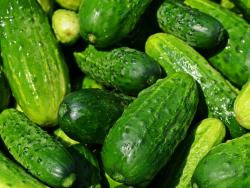
The concept of once-over mechanical, as opposed to multiple-pick hand or experimental multiple-pick machine harvesting, represented a major break-through in the practice of producing vine fruit such as pickling cucumbers. In the 1950s the cost of hand harvesting was as high as 50% of the…
Read More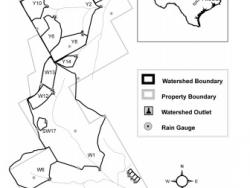
In the mid 1930's, the USDA Soil Conservation Service (SCS) realized the importance of hydrologic processes on agricultural fields and watersheds and determining their impact on soil erosion, floods, water resources, and the agricultural economy. In response, the SCS Hydrologic Division…
Read More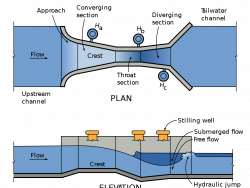
Since the beginning of irrigated agriculture, it has been important to measure flows of irrigation water. Accuracy of early water measurement methods often suffered because of trash or sediment in the water, or unusual flow conditions. Ralph L. Parshall saw this problem when he began…
Read More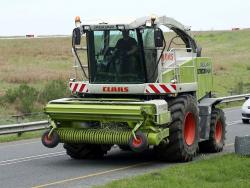
William J. Conroy Of Aylmer, Quebec, Received Patent No. 465,127 On The First Field Hay Chopper On 15 December, 1891. Its Sickle Cut The Crop, Which Was Elevated Directly Into A Cylindrical Curved-Bar Cutterhead. It Was Not Commercially Successful, But It Recognized The Need.
… Read More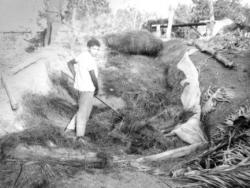
Designated a Historic Landmark of Agricultural Engineering at Oakland Manor In 1876 Francis Morris Built Brick Silos in His Barn and Introduced the Practice of Making Corn Silage in the United States. His Further Experiments Developed the Use of Earthen Trenches and Thereby Significantly…
Read More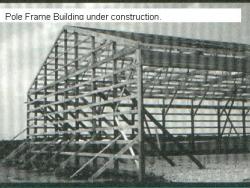
Pole Frame Building Historic Landmark Of Agricultural Engineering - In the mid 1940's, "B G" Perkins of Doane Agricultural Service introduced a new pole-frame construction along the Missouri-Illinois border. This idea revolutionized the way barns were built. With pole-frame construction,…
Read More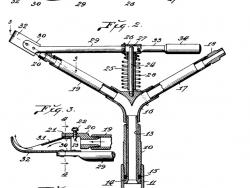
The Rain Bird horizontal action impact drive sprinkler head was invented in 1933 by Orton Englehardt, a citrus grower and native of Glendora. The design offered slow rotation and uniform watering, benefits long sought by local irrigators. Clement M. LaFetra, a friend of Englehardt, urged…
Read More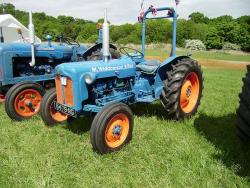
The First Agricultural Tractor Roll-Over Protection Structure (Rops) In The USA Resulted From Research By Lloyd H. Lamouria, Ralph R. Parks And Coby Lorensen At The Agricultural Engineering Department Of The University Of California At Davis. It Was Designed And Successfully Tested In The…
Read More
Early tractors were massive and expensive. Their steel lug wheels gave poor traction and a rough ride. Lugs were prohibited on many roads. 1926 Hoyle Pounds modified a Fordson tractor with zero pressure truck tires on special rims to improve performance on sandy soils in Winter…
Read More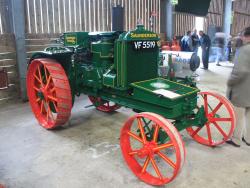
The Rumely Companies, which operated in La Porte, Indiana, from 1853 to 1931, produced a variety of equipment including threshers and steam engines, which helped to change the nature of American and world agriculture. The revolutionary OilPull Tractor, which was introduced in 1910,…
Read More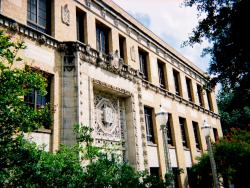
Scoates Hall 1932 A Historic Landmark of Agricultural Engineering Named for Daniels Scoates Designer of this Building Professor and Head Department of Agricultural Engineering 1919 to 1939 Eleventh President of ASAE Teacher, Writer, Engineer Counselor to Youth, His Example Still Inspires.…
Read More

